The No Bull Sheet is delighted to welcome wildlife biologist and author Laura Cunningham as editor and contributor. Thank you for this piece on Point Reyes, Laura.
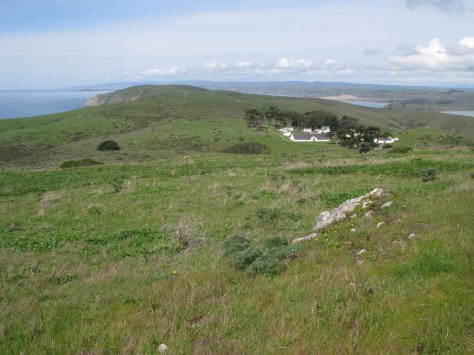
Special interest lobbies have been hard at work convincing Congress to loosen environmental protections and advance extractive industry profits, and in return, the legislature has increasingly been using its review and amendment powers to attack bedrock environmental laws ranging from public participation requirements to the protection of imperiled plants and animals. I’ve been working to try to stop this from happening on Point Reyes National Seashore and Golden Gate National Recreation Area in Marin County, California, where efforts are underway to amend the enabling legislation that founded those parks.
In 1962, Point Reyes National Seashore was established due to popular demand. The Congressional legislation that established the National Seashore was amended several times to make it clear how the land transferred into public ownership was intended to become a park unit:
Sec. 459c-5 (a). Except for property which the Secretary specifically determines is needed for interpretive or resources management purposes of the seashore, the owner of improved property or of agricultural property on the date of its acquisition by the Secretary under sections 459c to 459c-7 of this title may, as a condition of such acquisition, retain for himself and his or her heirs and assigns a right of use and occupancy for a definite term of not more than twenty-five years, or, in lieu thereof, for a term ending at the death of the owner or the death of his or her spouse, whichever is later. The owner shall elect the term to be reserved. Unless the property is wholly or partly donated to the United States, the Secretary shall pay to the owner the fair market value of the property on the date of acquisition minus the fair market value on that date of the right retained by the owner.
Concerning the administration of the new park lands, the legislation goes on to clearly state:
Sec. 459c-6 (a).…the property acquired by the Secretary under such sections shall be administered by the Secretary without impairment of its natural values, in a manner which provides for such recreational, educational, historic preservation, interpretation, and scientific research opportunities as are consistent with, based upon, and supportive of the maximum protection, restoration, and preservation of the natural environment within the area….
Resource Renewal Institute, Western Watersheds Project, and Center for Biological Diversity brought a lawsuit challenging the livestock industry’s refusal to leave after their mutually-agreed-upon rights of use had ended. If the National Park Service was confident that the law granted them enough latitude to allow livestock grazing to be extended further, they would have stood their ground and won in court. Instead, the Park Service signed a settlement, committing to finally update their General Management Plan and analyze a No-Livestock Alternative as part of a new environmental review under the National Environmental Policy Act (NEPA). The National Seashore had been delaying this for far too long. Some ranchers and dairies were determined to keep their livestock on public lands and keep their families in public housing, even after taking over $50 million in taxpayer funds in exchange for moving on during the establishment of the park. But since this was now officially public land, a NEPA review was required by law, and this included a fully transparent review with all public comments considered.
Irrespective of how clear a legal mandate might be, special interests can still lobby Congress to simply change laws they find bothersome.
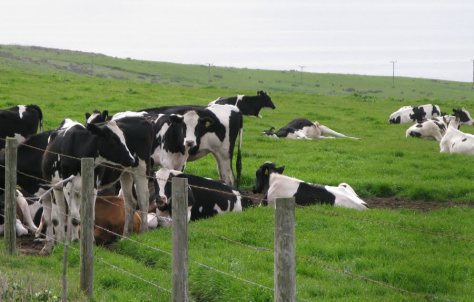
In an effort to turn the clash between ranching and conservation into political theater, the livestock industry pushed Point Reyes into the political arena. On April 25, 2018, the House Committee on Natural Resources held a hearing on NEPA–the watershed environmental law that reaches through every aspect of public lands defense. It was contentious, to say the least. The hearing was chaired by Congressman Rob Bishop (R-Utah), and its title reflected his biases against public lands conservation: “The Weaponization of the National Environmental Policy Act, and the Implications of Environmental Lawfare.”
Dr. Laura Watt, a professor of environmental history and policy at Sonoma State University testified on the side of Marin County agricultural groups trying to keep their cattle on the National Park units long past their legal obligation to leave. She presented her interpretation of NEPA, and the ecology, management, and intent of Point Reyes National Seashore. Nobody was invited to testify on the side of conservation.
The hearing itself was educational to watch (live-streamed on YouTube). Bishop complained that the NEPA process took too long, asserting an average of 5 years to complete a federal review of a project. There was debate over allowing more Categorical Exclusions, special exemptions allowing projects to be approved without public input or environmental review, instead of Environmental Assessments (or even more detailed Environmental Impact Statements, or EISs). By law, a federal action may only be “categorically excluded” from a detailed environmental analysis if the federal action does not, “individually or cumulatively have a significant effect on the human environment.”
The “human environment” here being the last vestiges of natural plant and animal communities at Point Reyes, including coastal prairie, Bishop pine forest, north coastal scrub, and Pacific sand beach. These have been impacted by decades of cattle grazing and manure dumping from the many dairies. The dairies try to dispose of these bio-hazard waste products by accumulating them in manure ponds and then spreading the effluent within creek watersheds that empty into popular public beaches. Kehoe Creek alone has been tested to have extremely high fecal coliform levels due to livestock manure: In 2001, the park hydrologist found that even as far as two kilometers downstream from two dairies, fecal coliform levels far exceeded Clean Water Act standards for recreational use areas.
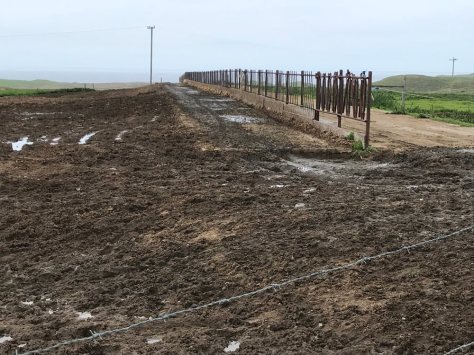
Dr. Watt told the Congressional committee that NEPA creates “long delays” for the ranchers, who want a decision now on whether they can continue ranching and dairying, which is presently illegal in the park units.
But Congressman Raul Grijalva (D-AZ), Ranking Minority Member on the committee, came to the defense of NEPA, eloquently describing it as a shield that protects the environment and public health. He pointed out that less than 1% of projects on federal land go through the lengthy EIS process, and in fact tens of thousands of projects already get exempted from any public participation or review. Grijalva firmly told the committee that NEPA reviews hold the government accountable.
Valuable testimony was given by Horst Greczmiel, NEPA champion and former Assistant Director of the Council on Environmental Quality (CEQ)—the administrative body in charge of coordinating NEPA with federal agencies and a part of the Executive Office of the President.
He explained that Categorical Exclusions were used 95% of the time, for tens or hundreds of thousands of federal actions that the public may not even know about and are not notified of. Only the corporate or special-interest applicants participate in this form of environmental review on public lands, minus important public input.
Another 4% of projects on public lands are reviewed openly with Environmental Assessments, and only 1% of federal actions (around 200 per year) are given the full analysis of an Environmental Impact Statement. So very few development or resource extractive projects on public lands are actually reviewed with full public participation.
The Trump administration has announced that deregulation – including sweeping away environmental standards – is a key priority, and is seeking to squeeze that timetable down even further through Secretarial memo.
Continuing on with the hearing, Dr. Watt’s testimony mischaracterized the ecology of Point Reyes National Seashore. Since researching the Bay Area’s historical ecology in my book, A State of Change: Forgotten Landscapes of California (Heyday: 2010), I had disagreements with her testimony concerning this park unit and its management.
In her testimony, Dr. Watt claimed that if the ranchers were to leave, this would result “in serious degradation of historic buildings and increases in fire hazard from unmanaged pastures being taken over by invasive brush and weeds,” and “allowing, over time, proliferation of non-native vegetation—with dangerously increased risk of wildfire.”
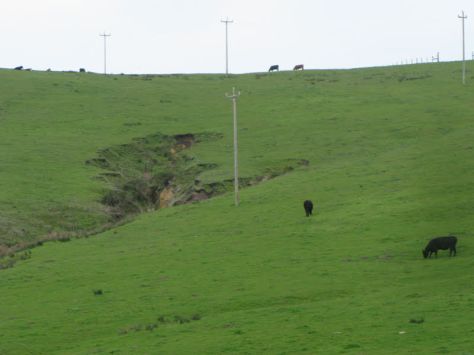
I strongly disagree. The livestock pastures are the ones dominated by weeds, as I saw during a recent field trip in March 2018—noxious weeds such as milk thistle and poison hemlock invading pastures full of introduced European annual grasses. The Tomales Point elk reserve, where cattle are not allowed to graze, has increasing native plants in my observations. Some areas far from the dairy barns were ungrazed by cattle, or where livestock have been fenced out, have beautiful examples of relict native perennial grasses such as Idaho fescue, blue wildrye, and Pacific reedgrass. I am not convinced a slight increase in coyote brush and bush lupine in recovering native habitats poses a more significant fire risk than silage fields and weedy annual grasslands full of tall poison hemlock fuels.
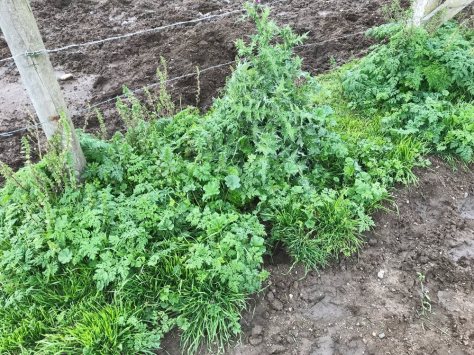
Plus, native Bishop pine forests are fire-adapted forests, as acknowledged by the Park Service. Shall we cut down the native Bishop pines to reduce the “dangerous” risk of wildfire? No, the Park Service is not doing that.
“This is our public land, and it is being commercialized and industrialized to benefit a few private individuals or corporations.”
The Park Service could always analyze an alternative to do prescribed burning in a rotation of patches, since fire is important on grasslands/coastal prairie, or allow the native tule elk to graze freely rather than relying simply on cattle grazing. But this needs more study—which is precisely why NEPA is so important. NEPA reviews give the public an open and transparent opportunity to suggest many different alternatives, have them analyzed by the agencies involved—we hope on a sound scientific basis—and comment on which alternatives best reflect the general public interest concerning management of the environment. Recreational opportunities, ecological restoration, historical interpretation, and scientific study should be included as part of NEPA analyses.
The Coast Miwok peoples used fire to modify plant communities, but coastal prairies did not necessarily need fire to maintain open structure. In my findings, soils, climate, ocean winds, and elk herds also maintained open habitats. These native prairies of deep-rooted bunchgrasses can persist as native grasslands without humans.
Watt failed to mention the native coastal prairie, and how livestock grazing can negatively impact the deep-rooted native bunchgrasses. Tule elk grazing is very different than large dairy cows grazing at high densities. I have visited examples of rare native coastal prairies along the central California coast area that have not been grazed for decades and are doing fine, with high species diversity. On the other hand, I found that native grasses were eliminated by cattle grazing on Point Reyes.
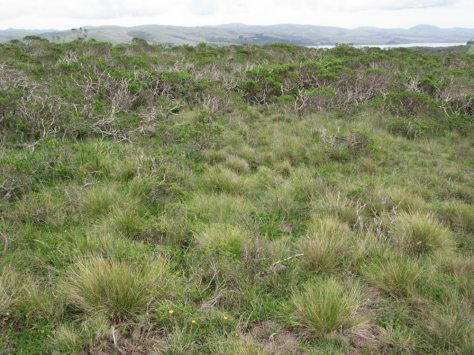
Watt also failed to discuss the pre-contact early California wildlife that inhabited the Point Reyes Peninsula for thousands of years, including tule elk, black-tailed deer, pronghorn antelope, coho salmon, elephant seals, and the iconic California grizzly. Today Point Reyes National Seashore is an ecological island of public land surrounded by expanses of private land with various forms of development, urbanization, farming, dairying and ranching. The original intent in creating this park unit was to have a natural landscape here, full of wildlife, not a working commercial landscape.
Yet currently, when I visit Point Reyes National Seashore I have to search for tule elk, I never see them covering the landscape abundantly. I do see a lot of cows—there are at least 6,000 in the National Seashore and in Golden Gate National Recreation Area. In fact, the tule elk suffered a major die-off within the Tomales Point Elk Reserve in the recent extreme drought (250 elk died), as they were locked behind giant fences and gates, unable to find enough natural water sources or green vegetation on their isolated point of land surrounded by the ocean. During the same drought, the cattle did not suffer a die-off, as they were well-fed and watered.
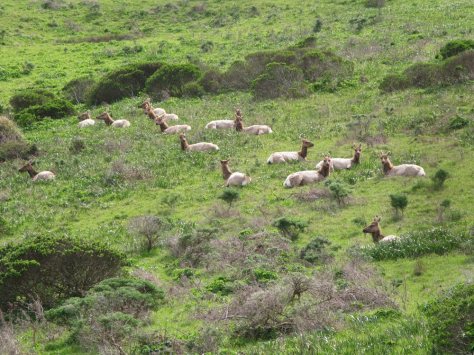
In the Organic Act of 1916, which created the National Park Service, Congress clearly specified the conservation of native wildlife as one of the main purposes of the parks. A frequently quoted passage of the Act states “…which purpose is to conserve the scenery and the natural and historic objects and the wild life therein and to provide for the enjoyment of the same in such manner and by such means as will leave them unimpaired for the enjoyment of future generations.”
The law says “historic objects,” such as old ranch barns? (In talking with experts, the phrase “historic objects” needs more clarification.) It does not refer to people living on park property growing modern commercial food products, or hosting AirBnBs, as local ranchers are now demanding to do on National Seashore land.
During the hearing, Jared Huffman (D-San Rafael), who represents the Marin County area and is a member of the Committee on Natural Resources, spoke up and said that he and Senator Feinstein (D-CA) were working on the PRNS (Point Reyes National Seashore) issue. “Dairies and ranches are an integral part of Point Reyes National Seashore,” he opined.
Will the enabling legislation be changed by some rider slipped through Congress?
This is our public land, and it is being commercialized and industrialized to benefit a few private individuals or corporations. There are now recently-built state-of-the-art dairy facilities here on Park Service land, as farmers and ranchers attempt to keep up to industry standards. Introduced invasive mustard and radish from Europe are grown here for cattle feed. Hay is trucked in from hundreds of miles away to feed the cattle on the National Seashore, since the prairies and grasslands here cannot sustain this many stock. These are not what I consider historic objects.
I would emphasize that the public ultimately has responsibility for the decisions made about this beautiful public land, and that Congress bears the responsibility to listen to the public, not to certain private interest groups exclusively.
Many do not believe that Congress should pass a “narrowly tailored purposes amendment” to the enabling legislation of Point Reyes National Seashore. Congress should step back and allow the laws of the land to fully operate: NEPA and the Organic Act, and the full public process where everyone can participate in how this park unit is managed.
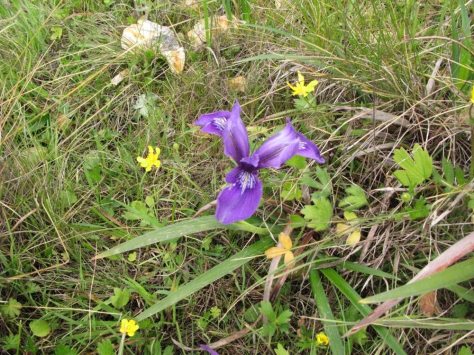
Laura Cunningham is California Director at Western Watersheds Project, a wildlife biologist by training, and author of A State of Change: Forgotten Landscapes of California (Heyday: 2010).


Quite frankly, our National Parks & wildlife refuges werent set up so that special interests could profit from livestock grazing! The damage done by too many cattle and too much manure takes years to recover from – that is – IF these dairy & beef operations are moved as they were meant to be after a certain number of years. How sad that the politicians and special interests are so frightened of actual natural habitat (UNDEVELOPED SPACE)!
LikeLiked by 1 person
I agree, open space on public lands is a rare thing in the Bay Area.
LikeLike
Very sad that more people aren’t aware of what is happening. This war against the environment has made its way to the California coast right under our noses.
LikeLiked by 1 person
Another thought – noticed how often our food supply is being contaminated by ecoli? Allowing fecal matter into water sources seems to me one reason. And yes, sure is a shame people are not aware or paying attention – possibly should look up from their phones occasionally & look around at the earth, sky, water – NATURE! What we humans are doing & have been doing for hundreds of years is shameful – if its continued – we wont be here much longer! And frankly, wildlife & its habitat AND the environment will be better for it. We MUST “get on the stick” & DO something.
LikeLiked by 1 person